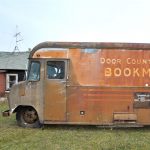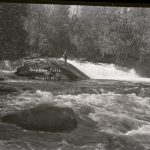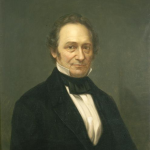Door County Library Bookmobile service began in 1950 through a Wisconsin Free Library Commission experiment called the Door-Kewaunee Regional Library Demonstration. The Demonstration was developed to explore the possibilities of providing library service to remote areas of the state. This was during a nationwide movement to improve library service to rural areas and schools. At this time per capita book circulation in Wisconsin was decreasing, rural literacy rates were low, and libraries were underfunded. Most adults in Door County at the end of the 1940s, for instance, had only an eighth grade education, and nearly all children attended school in 1 or 2 room school houses with limited resources.
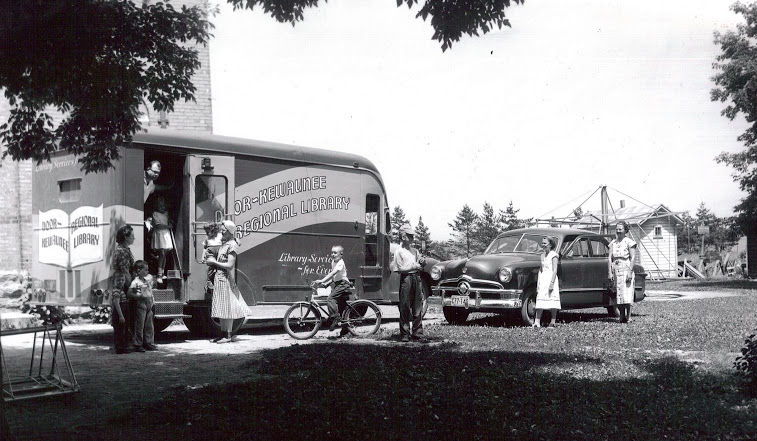
The Demonstration built upon the concept of the Wisconsin Idea. The concept was that the university’s influence should be spread across the state and that all Wisconsin’s citizens, both urban and rural, should be involved as partners in democracy with equal access to resources. Door County had a population of only 38,000 in 1950—most of whom lived in rural areas. The bookmobile concept promised to bring resources to the County’s rural residents who would otherwise have found it difficult to access brick-and-mortar libraries located in towns far away.
The Wisconsin Legislature approved the establishment of a single bookmobile demonstration in a rural area that lacked coverage by an existing library system. This was the first time the state provided direct funds for a community library service. The communities selected had to match the states funds. Door and Kewaunee Counties were selected due to their lack of library service, similar industries, and a heavily rural (some considered remote) region. The Sturgeon Bay library would serve as the demonstration’s headquarters.
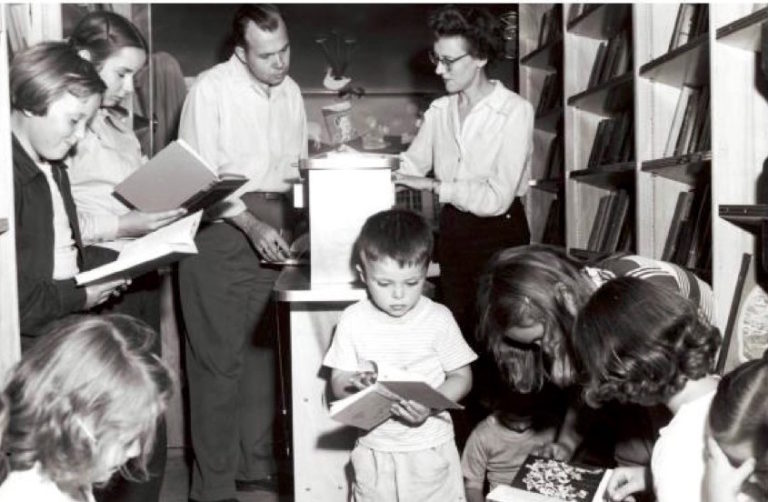
The Demonstration funding lasted two years. In the November 1952 election, a referendum to continue funding at the local level was on the ballot in both counties. The program was voted down in Kewaunee County and voted in favor in Door County.
The original Door County Bookmobile continued its rounds until 1967 when it was retired. County supervisors planned to eliminate the service, but library supporters wrote stacks of letters that changed their minds. A new 1964 Ford Truck Bookmobile was purchased from the Gerstenslager Company in Wooster, Ohio to replace the original vehicle that initially launched the Demonstration. This new Bookmobile hit the roads of Door County in 1968. It was retired in 1989 with a formal retirement announcement: for twenty-five cents county residents could take a final walk-through and say goodbye to the bookmobile.
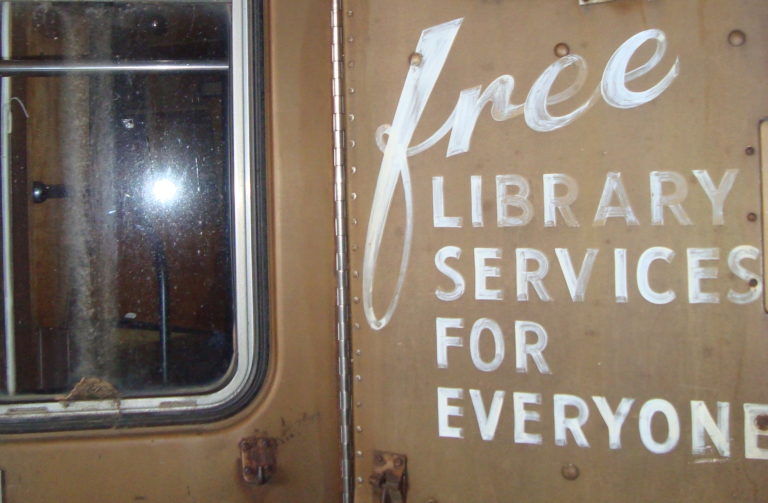
After 1989, the bookmobile was replaced with a cargo van and found new ownership at the farm of a local teacher and journalist who had a deep love of books. On November 28th 2014 the Egg Harbor Historical Society took ownership of the icon with the plan to fully restore the bookmobile and take in on the road filled with books, artifacts and a rotation of exhibits that explore the geography of reading and the rich natural and cultural history of the Door Peninsula.
Written by Julie Hein.
SOURCES
Pawley, Christine. “Blood and Thunder on the Bookmobile: American Public Libraries and the Construction of ‘the Reader,’ 1950-1995” in Augst, T. & Carpenter, K., Institutions of Reading: The Social Life of Libraries in the United States (Amherst: University of Massachusetts Press, 2007), 264-282.
Pawley, Christine. Reading Places: Literacy, Democracy, and the Public Library in Cold War America (Amherst: University of Massachusetts Press, 2010).
Door County Library Memorandum August 4th 1989.
